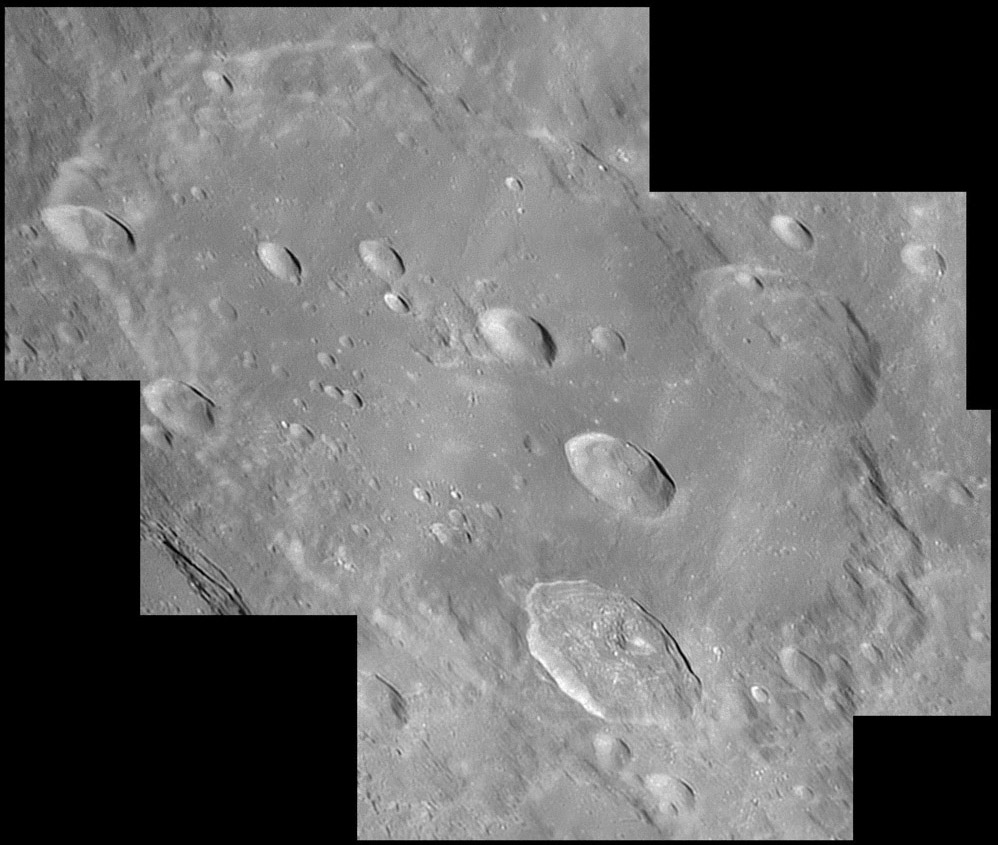|
|
| (5 intermediate revisions by the same user not shown) |
| Line 1: |
Line 1: |
| | __NOTOC__ | | __NOTOC__ |
| | =A Christmas Present= | | =A Christmas Present= |
| | + | <!-- Start of content --> |
| | + | <div class="post" id="post-803"> |
| | | | |
| − |
| + | <div class="storycontent"> |
| − | <div class="post" id="post-803">
| + | <p>[[File:Dp_clavius1_lpod.jpg|dp_clavius1_lpod.jpg]]</p> |
| − |
| |
| − | <div class="storycontent">
| |
| − | <p>[[File:Dp_clavius1_lpod.jpg|dp_clavius1_lpod.jpg]]</p>
| |
| | <p><em>image by [mailto:dpeach_78@yahoo.co.uk Damian Peach]</em></p> | | <p><em>image by [mailto:dpeach_78@yahoo.co.uk Damian Peach]</em></p> |
| − | <p>At 225 km wide and nearly 5 km deep, Clavius dominates the southern highlands when the illumination is low, but near full Moon it nearly [http://www.lpod.org/?m=20061119 disappears]. In between these extremes Clavius is wide open, its floor fully exposed, with just enough shadowing to highlight scarps. Damian’s gorgeous shot shows a smooth floor with a few stubby central peaks. The floor is generally thought to be fluidized ejecta from Orientale or Imbrium; it could be lava flows, but certainly not dark ones like mare basalts. The youngest, somewhat large crater - Rutherfurd (54 km, bottom-center on Clavius’ rim) - has totally slumped walls and possible patches of impact melt on its floor. Ejecta from Rutherfurd radiates away in a few lines of just resolved secondary crater pits. A nice Christmas present.</p> | + | <p>At 225 km wide and nearly 5 km deep, Clavius dominates the southern highlands when the illumination is low, but near full Moon it nearly [[November_19,_2006|disappears]]. In between these extremes Clavius is wide open, its floor fully exposed, with just enough shadowing to highlight scarps. Damian’s gorgeous shot shows a smooth floor with a few stubby central peaks. The floor is generally thought to be fluidized ejecta from Orientale or Imbrium; it could be lava flows, but certainly not dark ones like mare basalts. The youngest, somewhat large crater - Rutherfurd (54 km, bottom-center on Clavius’ rim) - has totally slumped walls and possible patches of impact melt on its floor. Ejecta from Rutherfurd radiates away in a few lines of just resolved secondary crater pits. A nice Christmas present.</p> |
| | <p>[mailto:tychocrater@yahoo.com Chuck Wood]</p> | | <p>[mailto:tychocrater@yahoo.com Chuck Wood]</p> |
| | <p><strong>Technical Details:</strong><br /> | | <p><strong>Technical Details:</strong><br /> |
| Line 15: |
Line 14: |
| | Rükl chart 72<br /> | | Rükl chart 72<br /> |
| | [http://www.damianpeach.com/lunar.htm Damian’s website]</p> | | [http://www.damianpeach.com/lunar.htm Damian’s website]</p> |
| − | </div>
| + | <p><b>Yesterday's LPOD:</b> [[December 24, 2006|Measuring a Serpent]] </p> |
| − |
| + | <p><b>Tomorrow's LPOD:</b> [[December 26, 2006|A Crater with Everything]] </p> |
| − | | + | </div> |
| − | ---- | + | <!-- End of content --> |
| − | ===COMMENTS?===
| + | {{wiki/ArticleFooter}} |
| − | Click on this icon [[image:PostIcon.jpg]] at the upper right to post a comment.
| |




